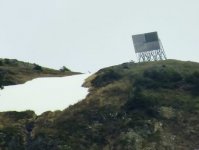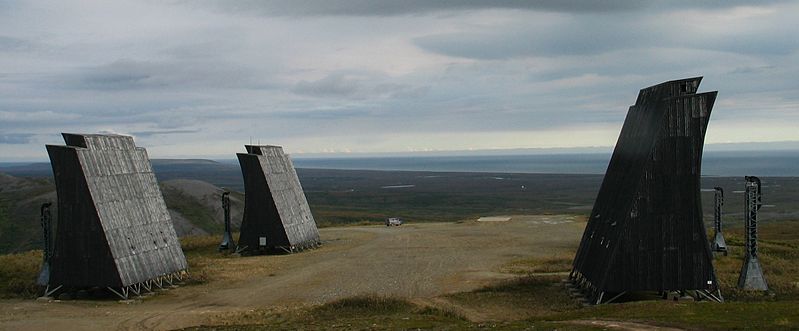Oh Wow ! Guys !
I had no idea when I posted this it would evolve so gloriously !

I should have prefaced at the outset that I am by no means an expert on this feedline- or any feedline, for that matter. My background with the G-Line goes back to the years when I would demonstrate them to undergrads, back when I was a TA. The extent of my understand'ng is pretty much detailed in what I have already said. But I can fill in a few details.
The wire was ( yes past tense now- more on this to follow )-- was a special find that the guys in the machine shop located for me. It was a thousand foot spool of number ten copperweld wire, coat'd with an epoxy resin. What this wire was originally intended for -who knew-- but all I was looking for was that it be 'insulated'--- and I settled for the epoxy which worked fine, though I had used vinyl covered wires in my teaching days.
There was no intermediate support for the wire- it ran quite vertically from a barn roof- up to the top of the rock cliff that over shadows my place-- in one big swoop. I never figured it would last and the last storm proved the point -- but what is the old ham saying ?
If your antenna stay'd up all winter it wasn't big enuff
In the end, this was an experiment that worked. Anyone wishing to follow I hope will be as rewarded as I was.
_____________________________________________
Oh----and an Epilogue
One of my nieces is visiting over her Spring Break.
She and my friend Cindy were going off skiing--
We've had a couple of fresh snow's since the G-Line disaster--
New snow was covering the detached barn horn--
Some one back'd her F250 over--
...........well, you can fill in the blank
That horn is now flatter than a day old glass of Coke.
Spring will not see it re-strung. I have this idea about using a passive repeater instead.
Stay tuned !

Lauri
View attachment 138686
.
.







